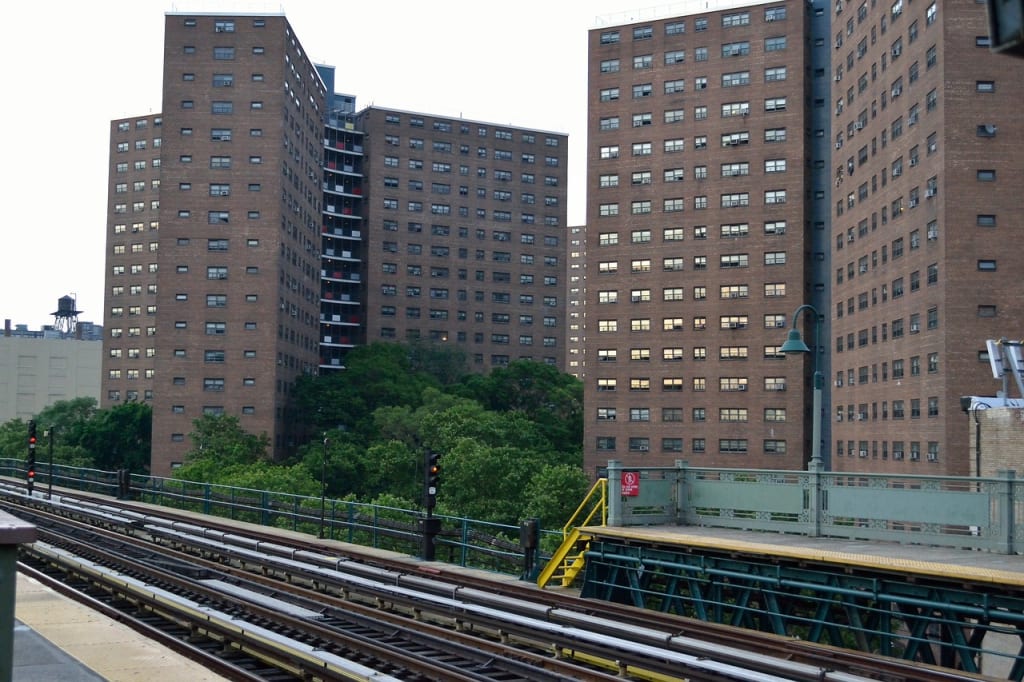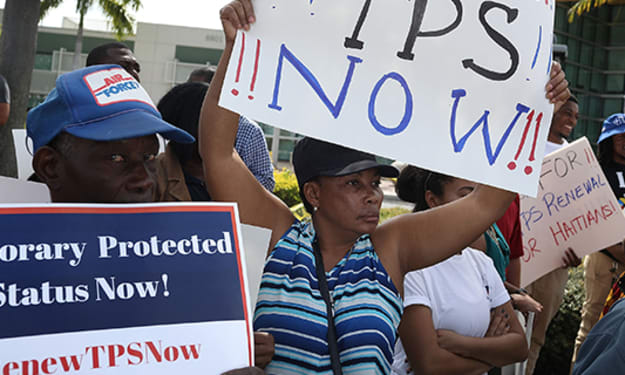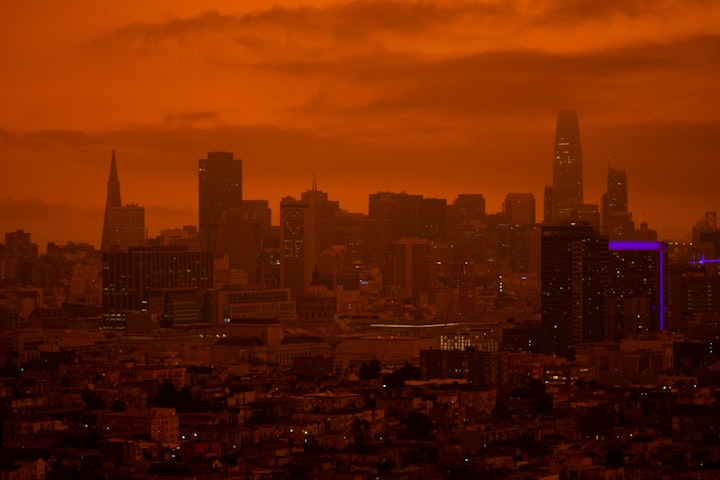
I often joke describing my Instagram posts as, “projects chronicles shenanigans.” Of course, this is nothing to joke about, but just my way of bringing some levity to real life for many of us who live at the lower spectrum of society. And those Instagram stories are just my experiences. Within the yellow walls, red doors, brown tiles, and long hallways exist today's public housing. All of them look the same, nothing special sets them apart. If you've seen one, you've seen them all. Inside many, you will hear all the same sounds of children crying and playing; adults yelling, laughing, fighting and sometimes even partying. According to The U.S. Department of Housing and Urban Development, (HUD) "Public housing was established to provide decent and safe rental housing for eligible low-income families, the elderly, and persons with disabilities. In fact, if you were lucky enough to have been selected from the many awaiting their turn, public housing used to be the Utopia of the low-income family who couldn't afford “the house with the white picket fences” or to live in better affluent neighbourhoods. Meanwhile, for the progenies (like myself) who grew up within the walls of public housing as it is widely known, but nicknamed, “the projects,” it is the place where you couldn't wait to move away. The place when you left, it was like being granted parole for good behavior or before you got scarred for life. It's the place once you left, you never wanted to come back, not even for a visit. Growing up, I had come to know public housing as a cautionary tale. By the time my family moved to public housing in the 80’s, it was already well on its way to becoming known as the place where, you never wanted to be caught out after a certain time or in a particular neighborhood. At the time, my neighborhood especially was riddled with the current crack and cocaine epidemic, and rampant prostitution. By the time I was thirteen, I quickly realized that public housing was no Utopia. It was the first time I heard the term “ghetto,” a part of the city that is a slum, impoverished, destitute and occupied by a minority group or groups.
Recent 2016 stats from the National Center for Health in Public Housing reported that, nationwide there are over 2 million residents who live in public housing, and 4.7 million residents living in section eight housing. A little over 931,300 residents between the age of 18 and 61 (46%) live in public housing, with 2.1 million (47%) live in section eight housing. Approximately 754,900 (37%) children, ages 0-17 live in public housing. 35% of public housing and 42% of section eight housing households are headed by a female with children. Nearly 327,000 or 16% residents are seniors ages 62 or above, and approximately, 500,000 or 10% of residents of section eight are seniors. 36% of public housing and 42% of section eight households include a member who is disabled. In my city of New York, according to Wikipedia, “More than 400,000 New Yorkers reside in New York City Housing Authority’s (NYCHA's) 328 public housing developments across the City's five boroughs. Other sources noted, because there are so many people living "off-lease," the actual population is around 600,000. According to an NYCHA 2017 fact sheet, 19.9% of the population is age 62 or older. 32.7% are younger than age 21, and 27% are under age 18.
The history of public housing began after World War One in response to the post-war housing shortage. Introduced as part of the New Deal, the U.S. began building major projects to house needy families in the 1930s, but the program really took off in the 1950s, whereby one million units were built by 1973. It's been reported that there were problems right from the start, including the projects’ very locations and construction, which was grossly underfunded. The government insistence on holding down construction costs would eventually produce problems with upkeep. The authorities chose to build public housing projects in large cities, and in poor black neighborhoods. By the 1970s, the program was widely described as abject failures. Earlier studies suggest those failures were only in part because the neighborhoods had the worst housing and neediest people. Those with the clout or power to resist low-income neighbors made sure that the construction took place where people who could not resist lived, and some just simply moved away. Thereby, taking with them valuable resources, such as much-needed income tax to build better schools, maintained neighborhood upkeep and police departments for security. In short, the politics of class and race decided the location. It was reported from The Journal of Economic History, Cambridge Core that, “Communities with high densities of public housing had lower median family income, lower median property values, lower population density, and a higher percentage of families with low income contributed to the partial decline in human capital in the 70’s.” Many social scientists’ view at the time was that, poor crowded housing, along with dilapidated quarters contributed to the social dysfunction exhibited in public housing.
Federal support for housing since have largely been in the form of “Section 8” vouchers. The actual number of public housing units has shrunk in recent decades, resulting in a long waiting list, sometimes years, and stringent application process. They are 7,000 households on the waiting list for public housing. The wait is only six months to a year if you need a one-bedroom apartment in a hi-rise; for larger apartments, like three bedrooms, families can sit on the list for three to five years. Between 1994 to 2014, the number of units produce fell from more than 70 thousand to less than 59 thousand. Today, the challenges to affordable housing still remain and growing exponentially. Only 1 in every 4 household actually receive affordable housing, which is mainly due to discrimination against families with vouchers.
Emily Badger, who writes about cities and urban policy for The Upshot, found in her studies of Race or Poverty and Class or inequality, that 90 percent of the time there is always inequality no matter where you are raised if you are black. She uses the scenario: black boy vs. white boy, raised in a similar background, affluent circumstances, and families who are well off. What she found was: the black boy is much likely to become poor and white boy becomes rich. She concluded, “The places that foster equality, have low poverty rate, less ratio discrimination; have black fathers and or a father figure present and supports the black man, are good indicators that you could be successful in life.” To put it differently, it doesn't matter if you live in a nice neighborhood, and your parents are affluent, if race and inequality are a constant struggle, failure is inevitable. Though it's worth mentioning, even this conclusion has been debunked.
So, what is the truth? What are the ingredients for breaking the chain of systematic poverty with class and inequality at its core? Especially one that's intergenerational, rooted in racial inequality. I am no expert, so I'll speak from my own experiences, and the truths as I have come to know them. In all the years that I have been in and out of public housing, I have come to learn several truths about growing up in the “projects.” First, where I'm from it is not uncommon to be a product of your environment, whether or not there is a father or father-like figure in the picture. It is the unwritten rule. Yet at the same time, they are some exception to the rule. For example, you can change your circumstances if you are given the right tools, and learn how to use them. Second, poor neighborhoods are not known to produce the best schools. Thus, reducing your chances of getting a better education than your parents did. Third, you have to see better to want better. If all you know is poverty, you might be conditioned to think there's nothing better beyond what your eyes can see. Four, diversity is important to racial equity. When people are grouped together based simply on who they have things in common with, there's a greater possibility of developing a tribalism mindset, which separates and keep us from getting to know one another. Five, I know with or without a college degree you can get a decent job. If you have a decent job that pays you a livable wage, your chances of changing your circumstances become higher. Lastly, decent wages must be adjusted as necessary. If the country’s Gross Domestic Product (GDP) has to be adjusted for inflation, so should household income. I'm just saying, it's basic economics.
To put it all into context for you, consider this. My sister is a teacher and makes a decent income. She lives in a decent neighborhood, and able to pay for private school for her child. The results: the poverty cycle is broken. Because each new opportunity and possibilities offer the next generation a better chance to break the cycle of poverty. My brother worked for more than a decade for a bank making a decent wage. Eventually, he was able to buy a house and his daughter is in private school. Results: another intergenerational poverty chain broken. My brother in law, no college degree, but work for the city as a bus driver and make a decent income. He is now a homeowner, and his kids are also in a private school. What do all these individuals have in common? They are all from the projects. Fortunately, they are the exception to the rule. The rule being, they had a slim chance of breaking the cycle of poverty if you consider what the experts say.
Then there's me; I am the norm to the rule. I am in every way a product of my environment, couple with bad choices. I got pregnant in my late teens, held many low wage jobs, and struggled because money was never enough. With a divorce under my belt, I could not cut it by myself, so I moved back home to the projects. I got laid off, but eventually found work with a national publishing company, and things started looking up. Finally, I was able to move out to a house in Jersey City with my kids. I wanted them to grow up away from the confine of abject poverty of the projects, and show them a better way. Even though, my new job came with yearly bonus and raise, I was a single mom with two kids and no child support, so, I barely kept the roof over our heads. Of course, making decent money at the time, meant I was not qualified for any government help. Three years later, I got terminated from my job. Two years after that, I lost my apartment and had to move back in with my parents, who, yes, still lives in the projects. So, as they say, the struggle is real. And that's the short story.
Why tell you these stories? Here's why: I believe poverty cannot be defined by just one or two things. You can't slap a “no father figure” or “environmental casualty” bandage on it and say we have figured it out. Despite all these individuals perseverance, and the ability to change their circumstances, they all have another thing in common. They all travelled beyond the boundaries and confine of their abject poverty. What do I mean by that? For example, my sister went to college outside of our “ghetto” neighborhood. She travelled as an exchange student in France. She saw better, experience better, so therefore she wanted better. Although it was not easy, but she was given the opportunities, and education, which made her determined never to return to the projects.
There is an old saying that goes "you do not have to be a product of your environment and circumstances." The truth is, this also has been debunked in some ways. Not only by scientific facts but also by my own experiences. Those who didn't become a product or casualty of their milieu, are the exception to the rule. As for me, I am back at the place where I tried so hard not to be, but I have not given up on trying to break through the confine of my own poverty: the “projects.” In the words of Ms. Iyanla Vanzant, “Regardless of where you are, or what your current experience may be, there is always more.”
About the Creator
She Writes
I was born to write! I am a mother, wife, daughter, sister and friend. My children are my motivators. I have a passion for informing and inspiring others to be their best self! The women that inspire me are powerful beyond measures.💕💕






Comments
There are no comments for this story
Be the first to respond and start the conversation.